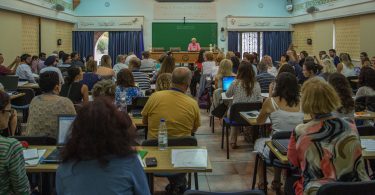
Abstract:
Research is a careful investigation or inquiry especially through search for new facts in any branch of knowledge. It is considered as a movement from the known to unknown. It is a cycle of defining, formulating, experimenting, analysing and reaching to a conclusion. A research problem needs statistical scales or test to analyse the data. So, this article helps in finding the ways to analyse the research problem.
Keywords: Research, study design, research methodology, statistical test
Introduction:
“A good research is stated to be systematic, logical, empirical, and replicable.”
Research inculcates scientific and inductive thinking and helps to promote the development of logical habits of thinking and organization. A research problem can be solved systematically by a proper methodology that is “research methodology”. This methodology may help in understanding, evaluating and analysing the defined research problem. The foremost task in initiating any research is defining a research problem. Next is formulating the research survey and working on developing hypothesis. Further researcher has to select appropriate research design and sample size. After sample size is designed, data is collected, analysed and a research is concluded on the achieved hypothesis. [1]
Research methodology differs from research methods, where research methodology is a way to systematically solve the research problems. It involves various techniques to conduct research and acquire knowledge to perform different test and experiments. On the other hand research methods are techniques and tools in conducting research and it aims to find solution to research problem. The research method includes description of data collection, statistical techniques and evaluation techniques. [2]
The arrangements of conditions for collection and analysis of data in a manner that aims to combine research purpose with economy in procedure is research design.[1] There are different methodologies used in various types of research and this term is usually considered to include the research designs collection and analysis of data. Research methodologies can be qualitative and quantitative. [2]

Table-1: Research methodologies
| Sl. No | Research methodologies | Description |
| Qualitative Research methodology[3] | ||
| a. | Narrative research | Narrative research focuses on studying an individual by gathering information from the stories and experiences narrated by him/her. Based on the content and the theme of the stories, the researcher writes the narratives, forms a chronology and discusses the life experiences with the individual while exploring the meaning attributed by them. [4] |
| b. | Ethnography | Ethnographic research aims to observe individuals in their natural live settings. It gives a deep insight in understanding a group’s shared cultural values and beliefs. It helps to study individual behavior and their interaction in the society. [5] |
| c. | Phenomenology | Phenomenology aims to study a phenomenon, as it is perceived and consciously experienced by an individual. It helps the researcher to understand the essence of people’s lived experience. [6] |
| d. | Grounded theory | Grounded theory is a systematic set of procedures used to develop an inductively derived theory. It implies inductive methodology in which data is collected, reviewed, compared and contrasted to construct a theory. [7] |
| e. | Case study | Case study focuses on an in-depth study of a single case or collective cases within a real world context using a bounded system. Data is collected from different sources, analyzed to understand the complexity of the case and finally interpretation is done to find the meaning to the data. [8] |
| Quantitative research methodology[9] | ||
| a. | Descriptive research | Descriptive research refers to the methods used to describe population, situation or phenomenon under study. Descriptive research is conducted through 3 methods: surveys, naturalistic observation and case studies. [10] |
| b. | Correlation research | Correlation design is used to describe and measure the degree of relationship between 2 or more dependent variables without manipulating any of the variables. Naturalistic observation, survey method and archival research. [11] |
| c. | Causal-comparative research | Causal-comparative study attempts to determine the cause and effect relationship between phenomena. There are 3 types of causal-comparative research: a) Exploration of the effects b) Exploration of the causes c) Exploration of the consequences[12] |
| d. | Experimental research: | Experimental research uses the scientific approach to establish cause-effect relationship among a group of variables that are included in the study. In this study independent variables are manipulated to determine the effects on the dependent variables. Pre-experimental, true experimental and quasi experimental are the types of experimental research designs. [13] |
Statistical test is a method that helps the researcher to validate or invalidate a statistical hypothesis with certain degree of confidence. The application of statistical test relies on the structure and distribution of data and on the type of variable. The statistical test can be parametric and non-parametric.
- Parametric test: – These tests assume the statistical distribution of data.
- Non Parametric: – These tests make no assumption of distribution of data.

Table:-2 – Application of Statistical test
| S.No | Statistical test | Application of the test to study design |
| 1. | Paired t test | It is used when we are interested in the difference between two variables that are separated for same subject. |
| 2. | Student’s t-test | A single sample t-test is used to determine whether the mean of a sample is different from known average and 2 sample t-test is used to establish whether a difference occurs between the means of two similar data.[14] |
| 3. | Z- test | It is used to determine whether two population means are different when the variances are known and the sample size is large.[15] |
| 4. | Anova test | It is used to determine whether groups of data are same or different for more than 2 paired groups.[14] |
| 5. | Quasi experimental | It is used likely when random assignment is impossible or difficult.[17] |
| 6. | Chi square test | It is used to compare multiple groups where the input variable and the output variable are binary.[16] |
| 7. | Mann-Whitney U test | This test compares two independent populations to determine whether they are different. |
| 8. | Kruskal Wallis test | It is to perform an analysis of variance to determine whether multiple groups are similar to each other. |
| 9. | Wilcoxon’s rank sum test | It is used to compare two related samples, matched samples or repeated measurements on single sample to assess whether their population mean rank differs are not.[18] |
| 10. | Spearman’s rank correlation co-efficient | To determine how well 2 variables for individual data points can predict each other. [16] |
| 11. | Friedman test | It is used for testing the differences between groups when the dependent variable being measured is ordinal. [19] |
| 12. | Fisher exact test | It is a test used to determine if there are nonrandom associations between two categorical variables/unpaired samples. [20] |
| 13. | Manova test | It is used to determine whether there are any differences between independent groups on more than one continuous dependent variable. [21] |
| 14. | Pearson correlation test | It is used when you want to find a linear relationship between two variables. [22] |
| 15. | Sign test | It is to test the null hypothesis that the median of a distribution is equal to some value. [23] |
Conclusion:
Research is an integral part of successful global health endeavours. The basic principles of research methodology will help the budding researchers to overcome the anxieties they experience while initiating any research. A good thumb rule is to select a relevant research design and statistical tests to achieve the selected hypothesis.
References:
- Kothari CR, Garg G. Research Methodology Methods and Techniques, 4th Edition, 2019, New Age international (P) Ltd, Pg. no- 6-19.
- Goundar S, Victoria University of Wellington, Chapter-3 Research Methodology and Research Methods, March 2012- https://www.researchgate.net/publication/333015026.
- Elkatawneh HH, Walden University, The Five Qualitative Approaches: Problem, Purpose and Questions/The Role of Theory in the Five Qualitative Approaches/ Comparative Case study- https://www.researchgate.net/publication/314535282.
- Lenfesty K, Reichling K, Schultz T, Narrative Research, Colorado State University; EDRM -600, http://edrm600narrativedesign.weebly.com
- Reeves S, Peller J, Goldman J & Kitto S, Ethnography in qualitative educational research: AMEE Guide No.80, Medical Teacher, 35:8, e1365-e 1379, DOI: 10.3109/0142159X.2013.804977
- Smith, Woodruff D, “Phenomenology”, The Stanford Encyclopedia of Philosophy (Summer 2018 Edition), Edward N. Zalta (ed.), https://plato.stanford.edu/archives/sum2018/entries/phenomenology/.
- Charmaz, K. Qualitative Research: Grounded Theory, The SAGE Encyclopedia of Social Science Research Methods 2003.
- Crowe S., Cresswell K, Robertson A et al. The Case study approach, BMC Med Res Methodology, 11, Article number: 100 (2011) https://doi.org/10.1186/1471-2288-11-100
- Key Elements of a Research Proposal- Quantitative Design, https://www.wssu.edu
- McCombes S, Descriptive research, May 15, 2019, https://www.scribbr.com/methodology/descriptive-research/
- Bhandari P, An introduction to Correlational research, July 7, 2021, https://www.scribbr.com/methodology/correlational-research/
- Maheshwari VK, Literature Review in Behavioural Research, Causal-comparative Research, https://www.vkmaheshwari.com
- Bill P, Research Methods for the Social Sciences, Chapter 10, Experimental Research, https://courses.lumenlearning.com
- Neideen T and Brasel K, Journal of Surgical Education, Understanding Statistical Tests. Article/ Academia-Accelerating the World’s Research.Pg.no-93-96.
- Types of statistical test. https://medium.com/@anushka.da3/types-of-statistical-tests-b8ceb90e13b3.
- Marshall E, University of Sheffield, Statstµtor, The Statistics Tutor’s Quick Guide to Commonly Used Statistical Tests. Reviewer: Jean Russ, Web: www.statstutor.ac.uk.
- I-Chant A. Chiang, Rajiv S. Jhangiani and Paul C. Price, Research Methods in Psychology, 2nd Canadian Edition , BC campus Open Ed -Web: https://opentextbc.ca/researchmethods/chapter/quasi-experimental-research/
- Non-Parametric test- Overview, Reasons to use, types, Web: https://corporatefinanceinstitute.com/resources/knowledge/other/nonparametric-tests.
- https://statistics.laerd.com/spss-tutorials/friedman-test-using-spss-statistics.php
- John H. McDonald, Handbook of Biological Statistics, Multiple comparison, www.biostathandbook.com/multiplecomparisons.html/
- Frost J, https://statisticsbyjim.com/anova/multivariant-anova-manova-benefits-use/
- Glen S, “Correlation Coefficient: simple Definition, Formula, Easy Steps”, https://www.statisticshowto.com/probability-and-statistics/correlation-coefficient-formula/
- Glen S, “Sign Test: Step by Step, https://www.statisticshowto.com/sign-test/
About the authors:
- Dr Poonam Narayan Sutar, M.D (Hom), Head of the Department & Associate Professor, Department of Community Medicine, MNR Homoeopathic Medical College & Hospital, Sangareddy, Telangana.
- Dr T. Surekha, M.D (Hom), Assistant Professor, Department of Community Medicine, MNR Homoeopathic Medical College and Hospital, Sangareddy, Telangana.





